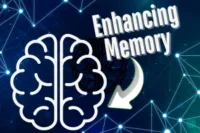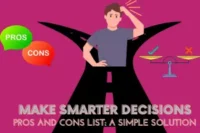The Ultimate Digital Detox Checklist for Your Mental Health in 2025: Reclaim Your Peace and Focus
Published: 07/08/2025
In 2025, it’s almost impossible to escape the grip of digital fatigue. Everywhere you turn, your phone demands attention — whether it’s the ping of an incoming message, an endless stream of social media updates, or work emails that blur the lines between personal time and professional demands. That constant hum of notifications and the urge to scroll, check, and reply is not just exhausting — it’s overwhelming. It’s leading to comparison anxiety, making you feel less than your peers as you get caught in the cycle of curated perfection on your screen.
But the impact goes deeper than just the amount of screen time. It’s taking a serious toll on your mental health. Stress is mounting, sleep is slipping through your fingers, and focus is increasingly fractured. The constant buzz of digital life is eroding your ability to truly unplug, leaving you drained and disconnected from the present moment. Perhaps you’re feeling a sense of guilt as you scroll through endless feeds, wishing you could break free but unsure how. The clarity you seek feels just out of reach.
The Unique Solution This Checklist Offers:
This isn’t just another generic “digital detox guide.” It’s not about taking a random break or committing to a vague 7-day cleanse. No, this is The Ultimate Digital Detox Checklist for Your Mental Health in 2025. It’s a precision-engineered, step-by-step roadmap that has been specifically designed for people like you — individuals who are overwhelmed by the demands of technology and are looking for a way out.
Inside this checklist, you’ll find actionable, practical steps based on the latest insights and advanced strategies that go beyond surface-level advice. We’ve broken it down in a way that allows you to reclaim your mental peace, reduce stress, and improve your well-being — one step at a time. This is your operational plan for building a healthier, more balanced relationship with technology in today’s hyper-connected world. Ready to reset? Let’s dive in.
The 2025 Digital Landscape: Why Your Mental Health Demands a Proactive Detox
In today’s world, digital technology is no longer a passive tool — it actively shapes our thoughts, emotions, and behaviors. The pervasive nature of personalized algorithms is a major driver of this shift, constantly pulling our attention and influencing our mental state.
The Evolving Threat to Your Inner Calm
In 2025, the digital world has evolved in ways that make it harder than ever to find peace. You’re not just engaging with technology — it’s engaging with you in a much deeper, more personalized way. Let’s break it down.

Hyper-Personalized Algorithms:
The AI-driven feeds in 2025 are more addictive than ever before. Social media platforms and content streaming services know exactly what to show you and when, based on a blend of your past behavior, preferences, and even your emotional state. These algorithms exploit your cognitive biases, constantly presenting content that grabs your attention — but not necessarily in a healthy way. It’s no surprise that you get caught in a cycle of endless scrolling, comparing your life to what you see on your screen, leaving you feeling inadequate, stressed, and disconnected from reality.
“Always-On” Work Culture:
The boundary between work and personal life is practically non-existent now. Instant communication tools, like email, messaging apps, and work platforms, make it impossible to switch off. Your workday doesn’t end when you leave the office (if you ever even leave). It’s the constant ping of notifications that pull you back in, triggering your brain to remain in work mode, leading to chronic burnout. You may feel that your personal time doesn’t belong to you anymore, leaving you mentally drained and emotionally distant from the things that matter most — your family, friends, and your own well-being.
Information Overload & “Doomscrolling”:
Let’s face it: we’re living in an age of constant news cycles. While we can’t ignore what’s happening in the world, the constant bombardment of negative headlines and distressing updates takes a psychological toll. The rise of “doomscrolling” — mindlessly scrolling through negative news, even when it heightens anxiety — has become a coping mechanism for many, but it only leaves you feeling more drained and helpless. It’s challenging to disengage from the global events that seem to demand your attention 24/7, and this unrelenting flood of information only deepens your stress and sense of overwhelm.
Statistic :
A recent study by the American Psychological Association (2024) found that 73% of individuals report feeling digitally overwhelmed, with 68% citing that constant news and social media consumption contribute significantly to their daily stress levels. This highlights just how critical it is to proactively manage your digital intake for the sake of your mental health.
The Profound Mental & Emotional Returns of Strategic Unplugging
You may feel like unplugging entirely from technology is a radical move — but the mental and emotional benefits are well worth it. Here’s how strategic disconnection can work wonders for your well-being:
Cognitive Restoration:
When you unplug from the digital world, your brain gets the chance to recharge. Studies show that taking regular breaks from screens improves focus, memory, and cognitive function. Without the constant stream of information, your mind can process thoughts more clearly, enhance your creativity, and even improve your problem-solving skills. It’s like giving your brain the space it needs to think deeply again.

Emotional Regulation:
Digital overwhelm isn’t just a mental issue — it’s an emotional one. When you disconnect, your stress levels drop, making it easier to manage emotions like irritability, frustration, and anxiety. The constant need to check notifications or compare yourself to others is exhausting. By taking a step back, you cultivate emotional balance, helping you to remain calm, composed, and present in real life.
Authentic Connection:
One of the most overlooked benefits of a digital detox is the restoration of authentic connections. By removing digital distractions, you open up the space to build deeper, more meaningful relationships — not just with others but with yourself. Whether it’s spending quality time with family or engaging in hobbies that don’t involve screens, your interactions become more genuine. And this helps foster a sense of belonging and emotional fulfillment.
Restorative Sleep Cycles:
If you’ve ever experienced a restless night after hours of screen time, you know how damaging it can be. The blue light emitted by devices disrupts your natural sleep cycles, making it harder to fall and stay asleep. But when you disconnect, your body gets the chance to reset its internal rhythm. You’ll find that falling asleep becomes easier, your sleep quality improves, and you wake up feeling more refreshed. This is crucial for long-term mental resilience, as quality sleep is the foundation for emotional balance and focus.
By understanding the profound effects digital fatigue has on our mental health and taking proactive steps to unplug, we set the stage for not just a temporary break from technology but a lasting change in our relationship with it. Your mental peace, creativity, and focus are all waiting for you on the other side of the digital detox. Ready to get started? Let’s dive into the action steps in the next section.
Phase 1: Precision Pre-Detox Protocols – Your Mental Health Launchpad
Before you dive into your digital detox, it’s important to set yourself up for success by establishing a solid foundation. These pre-detox protocols will help you understand your digital habits, enhance your security, and communicate your boundaries clearly. By setting these things in motion, you’ll ensure a smoother, more effective detox experience that leads to real, lasting change.
Checklist Item: Conduct a Granular Digital Audit (Beyond Basic Screen Time)
To truly understand your digital habits, it’s important to dig deeper than just screen time statistics. By analyzing the emotional triggers behind each phone interaction, you can gain valuable insights into how and why you engage with your devices.
Specific Action:
The first step in reclaiming your mental peace is understanding your current digital habits. For the next 7 days, meticulously log every time you pick up your phone. This goes beyond just tracking how much time you’re spending on apps; you need to note the trigger for each interaction. Was it boredom? A notification? Stress or anxiety? What app did you open in response? By doing this, you’ll start to see patterns in your behavior that you might not have noticed before. Use an advanced screen-time app like RescueTime, Moment, or Screen Time (for iOS) to track app usage in detail, so you can get a clearer picture beyond just the total screen time.
Actionable Insight:
After a week of tracking, take some time to review your data. Identify your top 3 “time sink” apps — the apps that consume most of your time, but don’t contribute positively to your well-being. Similarly, look for the 2 emotional triggers that prompt you to engage with your phone. Is it boredom, curiosity, or stress that leads to a quick scroll? Recognizing these emotional triggers will help you create healthier habits moving forward.
Expert Tip:
Create a visual “digital habit map” to make these patterns more tangible. You can do this by sketching out your phone usage over the week and connecting behaviors to specific triggers. This map will give you a clear visual representation of your digital habits and allow you to see where change is needed most. For example, you might notice that every time you’re feeling stressed, you instinctively check Instagram. That’s valuable insight that can guide your detox strategy.
Checklist Item: Fortify Your Digital Security Perimeter
Before you disconnect, it’s crucial to ensure your digital environment is secure. Taking proactive steps to update your devices will protect you from potential threats and provide peace of mind as you step away from technology.
Specific Action:
Before you unplug, take steps to fortify your digital security. Update all your devices — including your phone, laptop, and tablet — to the latest operating system and software versions. This ensures that your apps are fully patched, minimizing any security vulnerabilities that could be exploited while you’re offline. You don’t want to be at risk for cyberattacks or data breaches while you’re stepping back from the digital world.
Exact Advice:
Consider implementing hardware-based multi-factor authentication (MFA) for your most critical accounts — particularly your email and financial accounts. Apps like Google Authenticator or Duo Mobile provide app-based MFA, but for an extra layer of security, a YubiKey (a physical USB device) is a much stronger option. It’s a small but powerful tool that adds an extra level of protection when you’re logging into important accounts.
Troubleshooting Step:
One often-overlooked part of digital preparedness is offline communication. Since you’ll be stepping away from your phone, create a physical “emergency contact card”. This card should include important phone numbers (such as family members, doctors, and any emergency contacts) that aren’t stored on your phone. You can keep this card in your wallet or in a safe place for quick access in case of a true emergency. This small step ensures that, should you need to contact someone urgently, you have the information right at hand without relying on your phone.
Updating your software and implementing robust security measures isn’t just about keeping your digital life in check — it’s a safety precaution. Before disconnecting, it’s crucial to ensure your systems are secure, as this reduces the risk of falling victim to scams, cyber-attacks, or other digital threats. Taking these steps may seem like routine maintenance, but it’s critical to do so before you unplug to ensure that your devices are safe while you’re offline.
Checklist Item: Proactive Communication & Boundary Setting
Setting clear boundaries with your digital detox is essential to ensure your time offline is respected. By proactively communicating your plans, you create a framework that allows you to unplug without worrying about missing important messages or creating confusion.
Specific Action:
Communication is key when you’re about to take time away from technology. Draft and send a pre-scheduled “Digital Detox Notice” to essential contacts — such as work colleagues, close family, and friends — to let them know about your unavailability period. Be clear about your detox goals and timeline, so they understand that you won’t be checking emails, messages, or social media regularly. Be sure to explicitly mention emergency contact protocols in case something urgent comes up.
Actionable Insight:
To further set expectations, set up auto-reply messages on your email and messaging apps. These messages should let people know that you are on a digital detox, manage response times, and emphasize your commitment to your mental well-being. Something like: “Hi, thanks for reaching out! I’m currently taking some time away from my devices to focus on mental health. I will get back to you as soon as possible, but please understand my response time may be delayed.”
Expert Tip:
Designate a “digital gatekeeper” — a trusted friend, family member, or colleague who can filter urgent messages for you. This person will help manage critical communications during your detox period and ensure that only truly urgent matters reach you. This step takes the pressure off you, knowing someone is looking out for you while you take the time you need for yourself.
By following these Precision Pre-Detox Protocols, you’re preparing your digital environment for a healthier, more balanced relationship with technology. These actions are designed to ensure that when you finally disconnect, your mental peace and security are prioritized, allowing for a more successful and restorative detox experience. Ready to dive deeper into the detox process? Let’s move on to the next phase!
Phase 2: The Core Disconnection Checklist – Actioning Your Mental Reset
Now that you’ve set the groundwork for your detox, it’s time to dive deeper into the Core Disconnection Checklist. This phase is all about actively disconnecting and embracing the mental reset you’re seeking. It’s not just about turning off your devices — it’s about replacing old habits with intentional, offline activities that restore your focus, creativity, and well-being.
Checklist Item: Implement Strategic Device & App Disengagement
To truly disconnect, it’s important to create intentional barriers between you and your devices. By physically altering your environment, you can reduce the automatic impulse to check your phone or browse the internet, fostering a more mindful and focused state.

Specific Action:
One of the first steps to cutting the digital umbilical cord is to physically move your router to a less accessible location, or use a smart plug to schedule Wi-Fi downtime. If you’re at home, this simple change will make it harder to mindlessly check your devices or scroll the web. It’s all about breaking those automatic triggers to go online. By creating physical distance between you and the internet, you create a more intentional space for focus and relaxation.
Exact Advice:
For smartphones, activate “Grayscale Mode”. This reduces the visual appeal of apps by stripping them of their vibrant colors, making them less attractive and harder to get lost in. This simple switch has been shown to reduce the addictive draw of social media and apps, allowing you to use your phone more intentionally when necessary, without the mindless scrolling.
Actionable Insight:
Another strategy is to designate “Hard Tech-Free Zones”. These are areas where no digital devices are allowed — such as your bedroom, dining room, or bathroom. These tech-free zones create boundaries in your physical space, ensuring that certain areas remain sacred for rest, focus, or quality time with loved ones. When you step into these zones, you intentionally leave your devices behind, which helps you recharge and be more present.
Troubleshooting Step:
To further prevent the temptation to check your phone in the morning, replace your smartphone alarm with a dedicated analog alarm clock. We all know how easy it is to start the day with a quick scroll before even getting out of bed. By having an analog clock, you can avoid that immediate screen exposure and begin your day with calm instead of digital noise.
Checklist Item: Curate Your Analog Immersion Experience
To truly disconnect from screens, it’s essential to fill your time with activities that nurture your mind and body. By curating a collection of analog experiences, you create an intentional space to engage in meaningful, screen-free activities that help reset your mental state.
Specific Action:
One of the most effective ways to reset your mind is by immersing yourself in activities that don’t involve screens. A great way to do this is by creating a “Digital Detox Activity Jar.” Fill it with handwritten slips of activities that keep you engaged offline. Examples include:
- “Write a letter to a friend or family member”
- “Explore a new park in your area”
- “Try a new recipe”
- “Learn 10 words in a new language”
Whenever you feel the urge to reach for your device, pull a slip from the jar and engage in one of these activities instead. This simple tool keeps your offline life as fun and fulfilling as your digital one.
Actionable Insight:
Aim to dedicate at least 2 hours daily to a non-screen-based activity. This is crucial for rebuilding your focus and creativity. Whether it’s reading a book, engaging in an offline hobby, or spending time with loved ones, these 2 hours are an opportunity to reset your mind and reclaim time for meaningful experiences.
Expert Tip:
For an even deeper mental reset, explore “flow state” activities. These are activities that naturally absorb your attention and help you lose track of time. Gardening, painting, or playing a musical instrument are perfect examples. These activities don’t just keep you away from screens — they also promote mental relaxation and well-being, as they naturally induce a state of mindfulness and focus.
Consider a mini-case study of someone who discovered a new passion or significantly improved a skill during their digital detox. For instance, someone might pick up painting again after years of putting it off or discover the joy of learning a new language. These stories highlight how detoxing from technology can open doors to new interests and personal growth.
Checklist Item: Leverage Peer Accountability & Mindful Reflection
Having a support system can make all the difference when sticking to your detox goals. By involving a “Detox Buddy”, you create a sense of accountability that helps you stay on track and motivates you to remain committed to your digital reset.
Specific Action:
A “Detox Buddy” can make a huge difference in maintaining your commitment to your detox. This is someone who also values a digital reset and can help you stay accountable. You can check in with your detox buddy daily via non-digital means — like a quick phone call, in-person chat, or even written notes. Sharing challenges and successes helps keep you motivated and reinforces the importance of unplugging.
Actionable Insight:
Alongside your buddy system, maintain a physical “Digital Detox Journal”. This will be a space for you to reflect on your experiences, jot down your emotions, and track your progress. Make notes of how you feel each day — any improvements in sleep, mood, or focus. Journaling is a powerful tool for processing your detox journey and can reveal unexpected insights into your digital habits and mental well-being.
Expert Tip:
Whenever you feel the urge to pick up your phone or get back to your digital habits, practice a “Mindful Moment”. Take three deep breaths and consciously decide if the digital engagement aligns with your detox goals. This simple exercise can prevent impulse-driven behaviors and help you stay in control of your decisions. By pausing and reflecting, you create a small but powerful buffer between the urge and your actions.
Phase 2 is all about actively disconnecting from the digital world and embracing offline experiences that nourish your mental and emotional health. By strategically disengaging from devices, immersing yourself in meaningful activities, and leveraging peer support, you’ll begin to reclaim your mental clarity and focus. Ready to move on to the final phase of your detox? Let’s continue building lasting habits for your digital wellness!
Phase 3: Post-Detox Integration – Building Sustainable Digital Wellness for Life
Now that you’ve gone through the process of disconnecting and recharging, it’s time to focus on maintaining your digital wellness in the long term. This phase is all about reintegrating technology into your life in a way that supports your mental health rather than detracts from it. These steps will help you stay mindful of your tech usage and create lasting habits that keep you balanced, focused, and at peace.
Checklist Item: Strategic Re-Entry & Enhanced Security Posture
As you re-enter the digital world, it’s essential to ensure that your devices are fully protected and secure. Taking these preventive measures helps safeguard your personal data and ensures that your digital experience remains smooth and safe after your detox.
Specific Action:
When you return to your digital devices after your detox, the first thing you should do is run a full system scan with updated antivirus software on all your devices. It’s crucial to ensure that your devices are secure before you begin using them regularly again. This quick action helps protect you from potential security threats that may have surfaced while you were offline, and ensures your systems are running smoothly.
Actionable Insight:
While you’re re-engaging with your digital world, it’s also a good time to review your browser extensions and installed software. During your detox, some apps or browser extensions may have automatically updated or changed. Check for anything suspicious or unnecessary that could have been added in your absence. This ensures that no unwanted programs or extensions are slowing down your device or compromising your privacy.
Troubleshooting Step:
When you start re-enabling notifications, do so selectively. Prioritize essential communications — for example, family members, critical work alerts, or time-sensitive messages. Disable all other notifications by default. This helps you regain control of your device and ensures you’re not overwhelmed by unnecessary pings. Over time, you can adjust this further, only enabling notifications that align with your long-term digital wellness goals.
Checklist Item: Crafting Your Personalized Digital Wellness Blueprint
To maintain the benefits of your digital detox, it’s important to develop a long-term strategy for balanced tech use. Crafting a personalized digital wellness plan ensures that you stay mindful and intentional with your screen time while maintaining healthy boundaries with technology.
Specific Action:
Post-detox, it’s essential to build a personalized strategy for managing your technology use. Create a “Digital Wellness Contract” with yourself, and if applicable, with your family. This contract should outline clear guidelines for screen time limits, tech-free zones, and tech-free times. Be specific: define how many hours you’ll spend on screens each day, the rooms where digital devices aren’t allowed, and when you’ll engage in activities without technology (e.g., during meals, before bedtime, or on weekends). This contract will act as a roadmap for your sustainable digital wellness.
Actionable Insight:
Incorporate “Digital Check-in” sessions into your routine. Whether weekly or monthly, take the time to reflect on your digital habits. Are you sticking to your screen time limits? Are there any new distractions creeping in? Adjust your contract as needed to keep your habits aligned with your goals. These regular check-ins are a proactive way to stay on track and maintain your commitment to your digital well-being.
Expert Tip:
Consider adopting “digital minimalism” principles. This philosophy encourages you to own and use only the technology that adds significant value to your life. If an app, device, or digital service isn’t enhancing your well-being or contributing to your goals, consider removing it from your life. A minimalist approach to technology helps you stay intentional about what you consume and reduces the noise in your digital world.
Let’s look at Sarah’s success story: After completing her digital detox, Sarah created a wellness contract with her family that outlined tech-free dinner times and screen time limits during weekdays. After two months of consistently adhering to this contract, she noticed profound improvements in her sleep quality, mood, and productivity. By committing to regular Digital Check-ins, Sarah adjusted her contract over time, ultimately finding a sustainable balance between work, technology, and family life. This shift in habits led to a long-term improvement in her mental health, as she felt less overwhelmed and more present in her day-to-day life.
Building a sustainable digital wellness plan post-detox is all about intentional engagement with technology, not about cutting it out entirely. These strategies help you re-enter the digital world without losing sight of the clarity and peace you’ve gained during your detox. By crafting a personalized plan, consistently checking in with your habits, and applying digital minimalism, you ensure that your digital life becomes a tool for growth, rather than a source of stress.
Are you ready to take the next step in your journey to lasting digital wellness? The best part is that you’re in control. Keep adjusting, keep checking in, and keep embracing a life where technology serves you — not the other way around.
Expert Insights: Advanced Strategies & Pitfall Avoidance for Lasting Digital Balance
As you continue on your digital detox journey, it’s important to equip yourself with advanced strategies that will help you maintain balance in the long run. After all, the ultimate goal isn’t just a short break from technology — it’s a sustainable, healthier relationship with it. Here, we dive into expert-level tips to help you stay on track, avoid common pitfalls, and ultimately thrive in a balanced, digital world.
Advanced Maintenance Insights: Beyond the Basics
Maintaining long-term digital balance requires more than just occasional detoxing; it’s about integrating sustainable habits. By using the right tools and strategies, you can actively manage your tech usage and create a healthier, more intentional relationship with your devices.
Utilizing “Tech to Fight Tech”:
Ironically, technology can be your ally in maintaining a balanced digital life. Advanced app blockers like Freedom and Cold Turkey can help you set strict boundaries by blocking distracting apps or websites for set periods. You can customize these tools to block specific apps or the entire internet during designated times. This allows you to focus on important tasks without being tempted by the constant pull of notifications or social media. For a more streamlined experience, try browser extensions like StayFocusd (for Chrome) or LeechBlock (for Firefox), which allow you to limit time spent on distracting websites.
Curating Your Digital Diet:
In the same way you curate a healthy diet for your body, you need to curate your digital life. It’s all about reducing digital “junk.” Start by unfollowing distracting accounts on social media that don’t add value to your life. If there are newsletters or promotional emails that clog your inbox and induce stress, unsubscribe. Reducing the sheer volume of digital noise will help you maintain a sense of calm and regain control over what enters your digital space. Remember, you’re curating an environment that supports your well-being, not one that drains you.
Mindful Consumption of News:
In the age of doom scrolling, it’s easy to fall into a pattern of mindlessly consuming negative news. This can heighten stress and lead to feelings of helplessness. To prevent this, set specific news consumption windows. For example, limit your news intake to 30 minutes in the morning and evening, using reputable sources that offer a balanced perspective. Diversify your sources to avoid getting trapped in an echo chamber of anxiety-inducing content. By actively choosing when and how you consume news, you can protect your mental health while staying informed.
I once struggled with the habit of checking social media every 30 minutes, leading to stress and comparison. To break this habit, I used the Cold Turkey app to block social media completely during my work hours. After a few weeks, I noticed that not only did my productivity increase, but I also felt more present in my personal life. This was a huge breakthrough, as I had learned to manage my tech habits in a way that aligned with my values rather than my impulses.
Common Digital Detox Mistakes to Avoid (and How to Pivot)
When starting a digital detox, it’s important to approach it with flexibility rather than rigid expectations. Understanding that small, incremental changes lead to lasting results helps you avoid the pitfalls of extreme measures that are hard to maintain in the long run.
The “All or Nothing” Trap:
Many people fall into the trap of thinking that a digital detox has to be “all or nothing” — a rigid, full shutdown from all technology for a specific period. While this can feel like a quick fix, it often leads to burnout or rapid relapse once the detox period ends. Instead of focusing on extremes, aim for a flexible, iterative approach. Gradually reduce screen time over time, rather than cutting it out completely. Set realistic goals, and celebrate small wins. For example, aim for 1 hour less screen time per day each week and work your way toward your goal, rather than diving into a full tech fast.
Ignoring Underlying Issues:
Sometimes, the overuse of digital devices is a symptom of deeper emotional stress or anxiety. While a digital detox can provide relief, it’s important to recognize that the root cause of your digital habits may still be unresolved. Self-compassion is key here: understand that it’s okay to feel overwhelmed, and that your relationship with technology is a reflection of deeper emotional needs. If you find yourself struggling with a dependency on technology, consider seeking professional support from a therapist or counselor who can help you address the underlying emotional triggers.
Lack of Pre-Planned Alternatives:
When you unplug from technology, there can be a void — a space that was once filled with mindless scrolling or checking notifications. If you don’t fill this space with engaging, meaningful activities, you may find yourself slipping back into old habits. Plan ahead by creating a list of analog activities — hobbies or practices that don’t involve screens. These could include reading, cooking a new recipe, exercising, or engaging in creative pursuits like drawing or writing. Having a “go-to list” for times when you feel the urge to turn on your devices will help you stay committed to your detox goals.
Underestimating Social Pressure:
When you announce your digital detox, you may encounter social pressure. Friends and family may feel uncomfortable with your absence from digital spaces, and you may struggle with FOMO (fear of missing out). The key here is proactive communication. Let your social circle know about your detox goals in advance, and set clear boundaries regarding how they can reach you. For example, let people know that while you’re offline, they can contact you through a trusted “digital gatekeeper” or reach out via email if something urgent arises. By setting expectations early, you can avoid the guilt or anxiety that often accompanies social pressure.
The advanced strategies and common pitfalls outlined here are crucial for building a lasting digital balance. By utilizing tech tools to manage your tech use, curating your digital environment, and practicing mindful consumption, you’ll maintain the peace you’ve gained from your detox. Avoid the mistakes of rigid detox plans, unresolved emotional issues, and lack of preparedness by staying flexible, compassionate, and intentional with your habits.
Remember, your digital life is a tool, not a trap. As you continue to adjust your relationship with technology, you’ll find that it becomes an ally in achieving your goals — rather than a source of constant stress.
Are you ready to move forward with your digital wellness plan? Stay consistent, keep reflecting, and watch how your relationship with technology transforms over time!
Conclusion: Your Empowered Path to a More Present, Peaceful Life
Congratulations! You’ve now equipped yourself with The Ultimate Digital Detox Checklist for Your Mental Health in 2025 — a comprehensive, actionable framework designed to help you transform your relationship with technology. This isn’t just about temporary unplugging; it’s about actively choosing a life filled with mental clarity, reduced stress, and authentic connections.
By following these steps, you’re not only making a commitment to take back control of your time and energy, but you’re also creating space for meaningful, real-world experiences that foster true well-being. This detox is just the beginning of your journey to a more empowered and balanced digital existence — one where technology works for you, not against you.
Your next action step:
Which specific checklist item will you implement today to begin reclaiming your peace of mind? Whether it’s conducting a granular digital audit, setting up tech-free zones, or crafting your Digital Wellness Contract, the choice is yours. Take action now, and share your commitment in the comments below — your journey will inspire others to take the first step toward a more peaceful, balanced life as well.
Remember, the path to balance isn’t about perfection, it’s about progress. You’ve got this!
Your Digital Detox Questions, Answered
Absolutely! You can still maintain connections through “offline means”, like phone calls, face-to-face conversations, or handwritten letters. It’s about **quality interactions** rather than constant digital communication.
Reintroduce technology slowly. “Prioritize essential tasks”, like checking emails or responding to work messages. Gradually enable notifications for important contacts, and continue setting boundaries to avoid overwhelming yourself.
If you’re feeling overwhelmed by technology, disconnected from your real-life relationships, or noticing negative effects like lack of focus and sleep issues, then you’re likely ready to begin a digital detox. Starting with a small, intentional break will help you assess how much digital use is truly impacting your well-being and help you set realistic detox goals.

- Be Respectful
- Stay Relevant
- Stay Positive
- True Feedback
- Encourage Discussion
- Avoid Spamming
- No Fake News
- Don't Copy-Paste
- No Personal Attacks



- Be Respectful
- Stay Relevant
- Stay Positive
- True Feedback
- Encourage Discussion
- Avoid Spamming
- No Fake News
- Don't Copy-Paste
- No Personal Attacks




